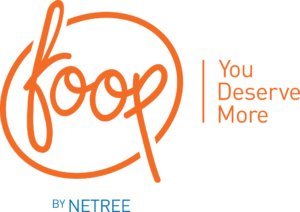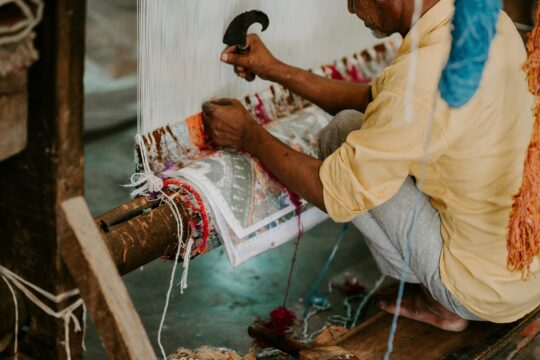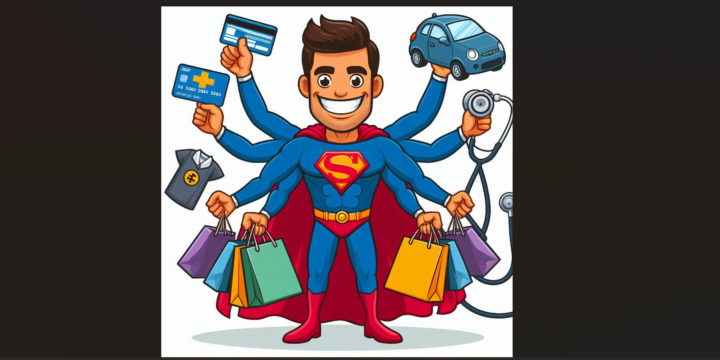As the whole world connects more and more through internet networking platforms, retail engagement platform Netree’s initiative, FOOP, is bringing together all the parts in the Indian retail machine. Desi Valli, the CEO of Netree spoke to The Tech Panda about FOOP’s path-breaking steps in connecting buyers, brands, and consumers.
According to Valli, India has some 14 million registered and 20 million unregistered retailers. This makes the Indian retail market the world’s largest unorganized market hiding below an organized market. While, by and large, the unorganized market consists of manufactured products, it is handicapped because of lack of inter-exchangeable information between the organized and the unorganized market. This leads to challenges in strategizing for new products or in a methodology to take a product to consumers.

For example, approximately, 15000 new products are launched by all companies put together in India per year, but the success ratio is only 0.2%. The primary reason for such low results is that most product experiments have to do with opinion-based model, and brands don’t have any mechanism to collect that information from the larger sections of the society to fine tune the product or withdraw the product even before the launch. This in turn is due to lack of information exchange between channels.
Inspiration
Valli, who is an engineer with a masters in marketing, explains that a natural network exists between brands, distributors, wholesalers, and retailers in the developing market of the retail industry.
“The network allows them to conduct day-to-day buying, selling, and logistics activities. However, what is missing dramatically is the information flow, which is supposed to move up and down the network. That flow is not possible, because there is no communication channel that is systematic in nature,” he says.
Ecohoy, the Online Retail Portal that Helps You Go Green
Keeping that in mind, Valli detected a need for a networking environment of stakeholders, where they could engage efficiently and improve communication between the channels, as well as back and forth. And thus, FOOP was born in 2013.
“It is difficult to find an analogy or even a similar company to compare with FOOP, because the problem is unique to the Indian developing market. However, the functions of linking all activities related to the supply chain and retail industry include what we call connect, promote and transact. Anyone who is a part of our platform can do these three activities,” he explains.
Offline Channels
Without a platform like FOOP, a brand would have to go through a network of people to reach out to a consumer, through the offline market distribution network. Information has to travel through offline marketing channels, like distributors, wholesalers, and retailers, before it actually reaches consumers. To own information about consumers, brands either have to depend on other companies or on their internal historical information. However, some information would often get lost.
“With no information highway available between channels and brands, consumer information is not accessible. In the offline world, unless you have your own store, there is no way you can collect consumer information. At the same time, in the Indian context, if you are coming from abroad, you won’t know any information about the retail market,” Valli says.
Horizontal Communication Model
Like LinkedIn, the FOOP platform has a horizontal communication model, each leg of retail value chain interacting freely with each other, leading to enhanced transparency quotient in retail business.
“What we have learnt from information aggregation companies, be it social or any other, is that if we make a horizontal structure, then the information acts like any other information-aggregation platform, whether you are a seller, a buyer, a distributor, a consumer, a retailer, or a brand,” Valli says.
The information becomes crowd outsourced rather than an organization wanting to go and collect information about the market. With FOOP, like any other networking platform, the information is provided by the user.
A networking platform like FOOP helps in engagement, because the information is being updated by the people themselves. This reduces flaws and wrong information, because the user decides what information should be shown or not shown. Hence, the authenticity of the information increases.
FOOP also helps in reducing leakages, which exist in the channels. He explains that because of these leakages, often offers do not reach the right people, or some people look for short cuts to gain benefits.
DBT
To a consumer’s advantage, FOOP also ensures Direct Benefit Transfer (DBT) of schemes and coupons offered by brands. Often, when offers and discounts are given for a product, consumers may not even know. In the DBT method, benefit of discounts, schemes, and offers reach consumers directly from the company without going through distributors and retailers. Later, the benefit is put into their bank account directly through an integration via Airtel. The advantage for the consumer is that no one in between takes any part of the benefit.
Report finds that Ecommerce sales expected to break $3 trillion worldwide by 2019
Latest Retail Tech Trends and the Future
According to Valli, businesses in the future will need more engagement platforms, where consumers and producers can engage directly. So, there will be a lot of engagement happening through platforms like FOOP.
“Communication will start to happen through platforms when people realize that networking this way gets more results than traditional methods like e-mail or others. A user can connect, can keep all conversations, and can be approached by contacts. In the future, more and more people will be engaging through these common platforms, where one person is actually able to connect with more than one businesses,” he says.
As of now, FOOP sees no competition, except in bits and pieces in the form of dealer management as a SaaS platform, or a PoS as a SaaS platform. Initially bootstrapped, the company raised funding from Chennai Angels and Lex ventures. Currently, the company is in the process of raising series A funding.
With a market potential of around USD 1.3 trillion USD, FOOP has already reached out to more than 17,000 retailers. “We are confident we will be able to reach out to more than 500,000 retailers by 2020,” the CEO says.
Since it’s a completely new concept, the Netree team had to spend time in understanding how to convince users to come on board. “It’s not just a product, it’s more of a learning on concepts and functions. Initially, it took a little bit of time, but we are at a phase which is helping us expand faster,” he says.












